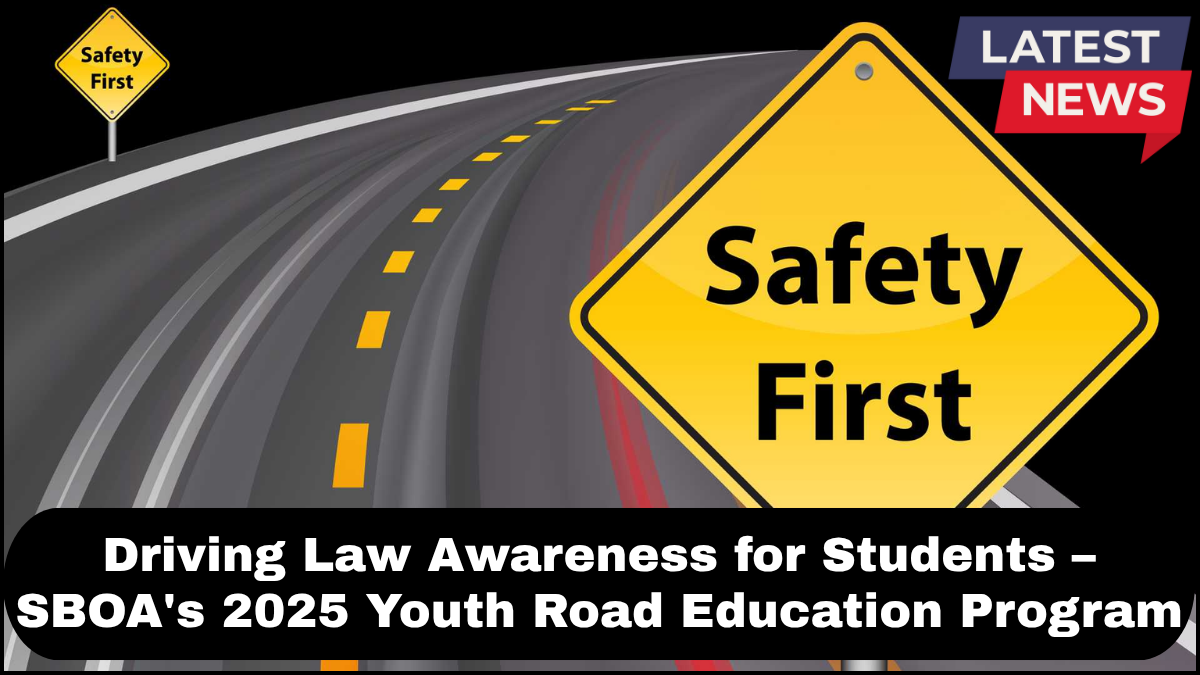In a bold step toward shaping responsible future drivers, the SBOA’s 2025 Youth Road Education Program has launched with a mission to elevate driving license awareness among students. This initiative is more than just a traffic safety lecture—it’s a structured, hands-on campaign aimed at embedding a deep understanding of road laws, driving ethics, and personal accountability behind the wheel.

Why Driving Law Awareness Matters for Students
Teenagers and young adults are statistically among the most at-risk groups for road accidents. One of the primary reasons is a lack of proper education on the laws and responsibilities associated with driving. As many students look forward to obtaining their driving licenses, it’s critical that they don’t just learn how to drive—but also why the laws exist and how to follow them.
Driving license awareness ensures that young drivers:
-
Understand legal requirements for obtaining a license.
-
Learn the consequences of violations and unsafe practices.
-
Gain clarity on the responsibilities that come with holding a driving permit.
-
Develop a lifelong respect for traffic rules and the value of safe driving.
Inside the Youth Education Program 2025
The youth education program 2025, created by SBOA (State Board of Automotive Administration), brings together road safety professionals, law enforcement officers, educators, and driving instructors. Its goal? To prepare high school and college students not just for a driving test, but for the real-world challenges of modern roads.
The program includes:
Interactive Workshops
Rather than just sitting through presentations, students participate in role-playing scenarios, traffic simulations, and decision-making exercises that replicate real-life driving challenges.
Legal Literacy Modules
The curriculum breaks down complex driving laws into student-friendly lessons. Topics include:
-
Licensing procedures and eligibility criteria
-
Zero-tolerance laws for underage drinking and driving
-
Points system and how violations affect driving records
-
Insurance implications for teens
Practical Demonstrations
Mock driving courses and obstacle challenges help students understand how distractions, speed, and peer pressure affect their performance. These sessions are supervised by certified trainers and highway patrol officers.
Guest Speakers and Testimonials
Survivors of road accidents and families affected by reckless driving share their stories. These powerful moments often leave a lasting impact, turning abstract laws into real-life consequences.
License Readiness Bootcamps
For students approaching legal driving age, the program includes step-by-step guides to license application, vision tests, written exams, and behind-the-wheel assessments.
Building a Culture of Road Responsibility
SBOA’s program doesn’t stop at awareness. It aims to create a ripple effect, where educated students influence their peers, families, and communities. The program also encourages schools to set up student-led road safety clubs, promoting ongoing engagement through campaigns, competitions, and community outreach.
Furthermore, social media plays a key role. Short videos, infographics, and interactive quizzes are used to reinforce driving license awareness beyond the classroom. The goal is to make responsible driving part of youth culture.
Government and Institutional Backing
The success of the Youth Education Program 2025 has drawn support from local governments, educational boards, and even private driving schools. Grants and partnerships have been introduced to expand the reach of the program into rural and underserved areas, where access to quality driving education is often limited.
Preparing Tomorrow’s Drivers Today
Driving is a privilege—one that carries immense responsibility. SBOA’s forward-thinking approach is giving young people the tools they need to navigate not just roads, but life. With better driving license awareness, today’s students are being groomed into tomorrow’s safest, most informed motorists.
FAQs
What age group is eligible for the SBOA Youth Education Program 2025?
The program primarily targets students aged 15 to 19, especially those nearing legal driving age or preparing to apply for a driving license.
Is the program mandatory in schools?
While not mandatory statewide, many schools are adopting it into their curriculum or extracurricular offerings due to its positive impact on student safety and awareness.
How is the program different from traditional driver’s ed?
Unlike traditional courses that focus on driving mechanics, the SBOA program emphasizes legal awareness, ethical decision-making, and long-term behavioral change.
Can students earn credit or certificates?
Yes. Participants receive certificates of completion, which can sometimes be used to support insurance discounts or count toward community service hours.
Where can I enroll or find more information?
Students, parents, and schools can visit the official SBOA website or contact their local school administration to check availability and enrollment details.
click here to learn more